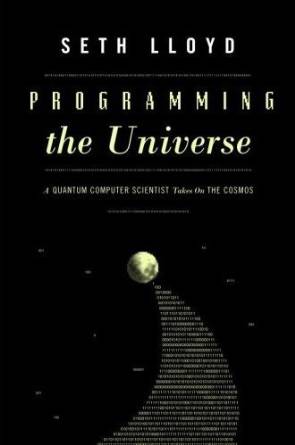When Seth Lloyd was a college student, he read a short story called The Garden of Forking Paths, by Jorge Luis Borges. In the story, Borges envisions a world in which all possibilities actually happen. At each decision point, each fork in the path, the world takes not one alternative but both at once.
To quote Borges: “He (Ts’ui Pen) believed in an infinite series of times in a growing, dizzying net of divergent, convergent and parallel times. This network of times which approached one another, forked, broke off, or were unaware of one another for centuries, embraces all possibilities of time. We do not exist in the majority of these times; in some you exist, and not I; in others I, and not you; in others, both of us.”
Lloyd was fascinated by the concept in this story because it sounded like the Many Worlds interpretation of quantum mechanics. “In this interpretation,” Lloyd writes in his book Programming the Universe, “whenever anyone makes a measurement that reveals information about the world being one way or another, the world splits in two and takes both paths.” So he wondered if Borges got his idea for the story from quantum mechanics.
In 1983, when Lloyd was a graduate student in physics at Emmanuel College, Cambridge, he was standing with a group of fellow grad students talking casually about life in Cambridge when a woman approached and said: “You fools! Don’t you see that the world’s greatest author is sitting over there with no one to talk to?”
Lloyd looked up to see an old blind man in a white suite sitting on a bench. It was Jorge Luis Borges, and the woman was his companion. Astonishingly, Lloyd realized he now had a chance to ask Borges in person about the question that had been on his mind for years.
Lloyd introduced himself and asked whether or not the foundations of quantum mechanics had influenced his writing of that story. Borges answered no, but went on to say that although he had not been influenced by quantum mechanics, he was not surprised that laws of physics mirrored ideas from literature.
In fact, The Garden of Forking Paths was published in 1941, years before John Wheeler’s student Hugh Everett introduced the Many Worlds interpretation of quantum mechanics. “So if there was influence, it was from literature to physics, not the other way around,” writes Lloyd.
The only thing missing in Lloyd’s story is that he failed to note the extraordinary unlikelihood of his meeting with Borges. If he seemed astonished by the coincidental meeting, he didn’t make note of it. In fact, nowhere in Programming the Universe does the word ‘synchronicity’ appear. But then he refers to the universe as a giant computer, and perhaps in Lloyd’s view synchronicity was not programmed into it. That seems hard to fathom, and I would like to ask him about that.
Maybe someday I’ll be at a conference and someone will approach me and says, “You see that man over there? He wrote Programming the Universe.” If that ever happens, I have a question for him, just as he had one for Borges. I will ask: “Dr. Lloyd, considering the meaningful coincidence you experienced when you met Jorge Luis Borges, where does synchronicity fit into the programming of the universe?”









Very interesting. Perhaps, if there are so many paths or forks, there is no synchronicity as everything must happen (somewhere) – or there again maybe not!
Interesting possibility!
Interesting how many times this could be repeated.
Maybe on out to infinity!